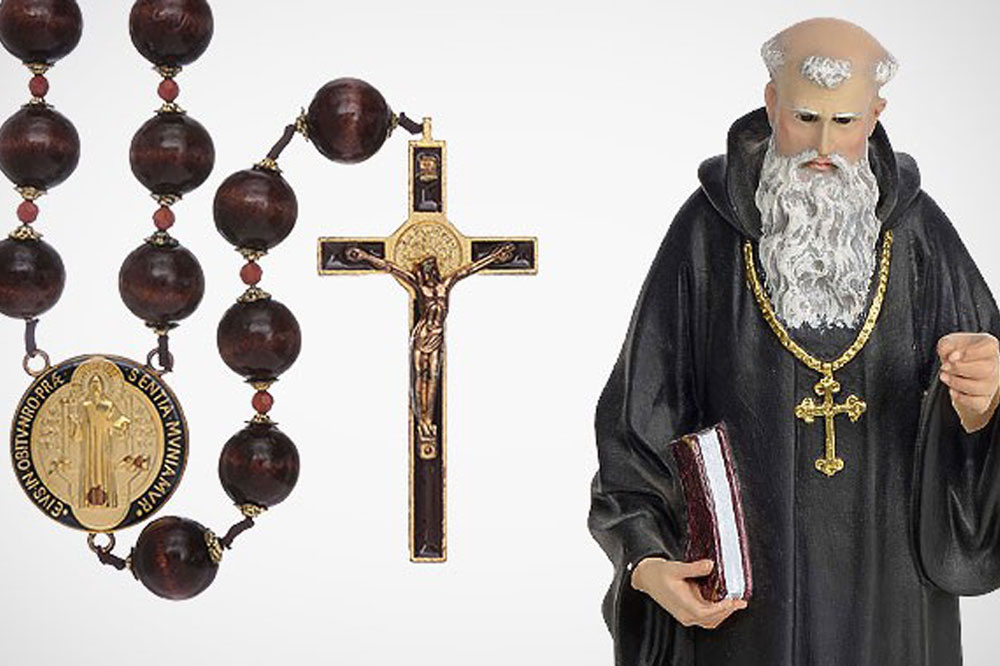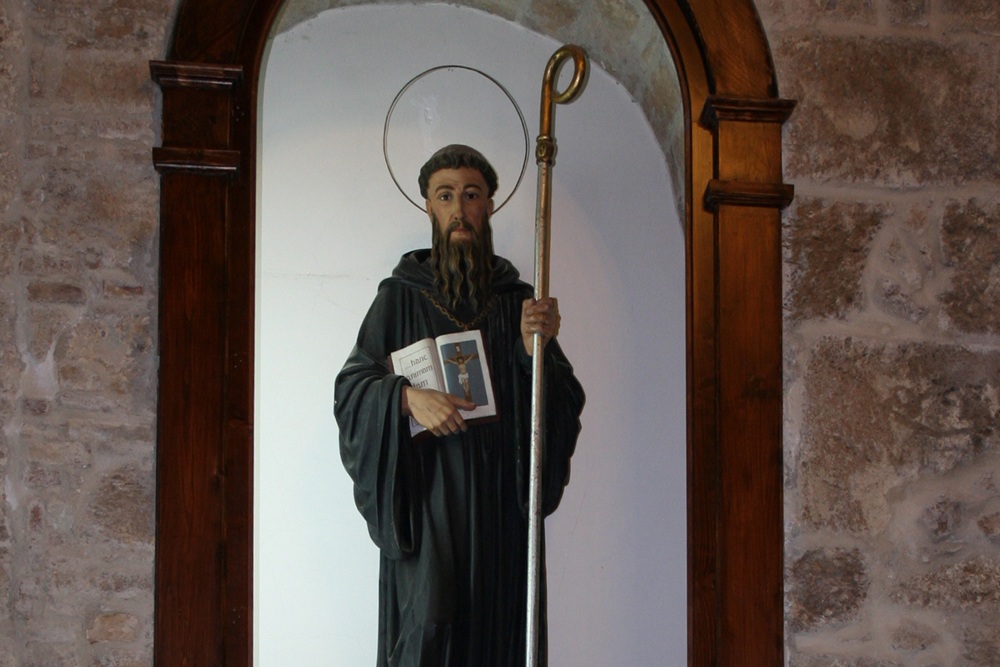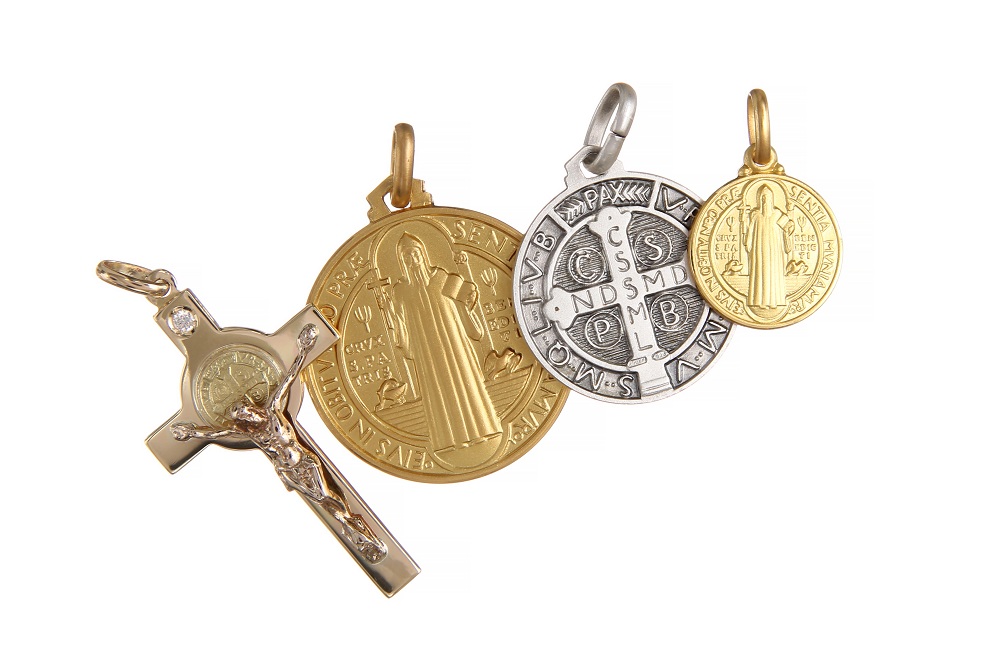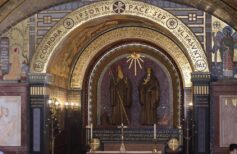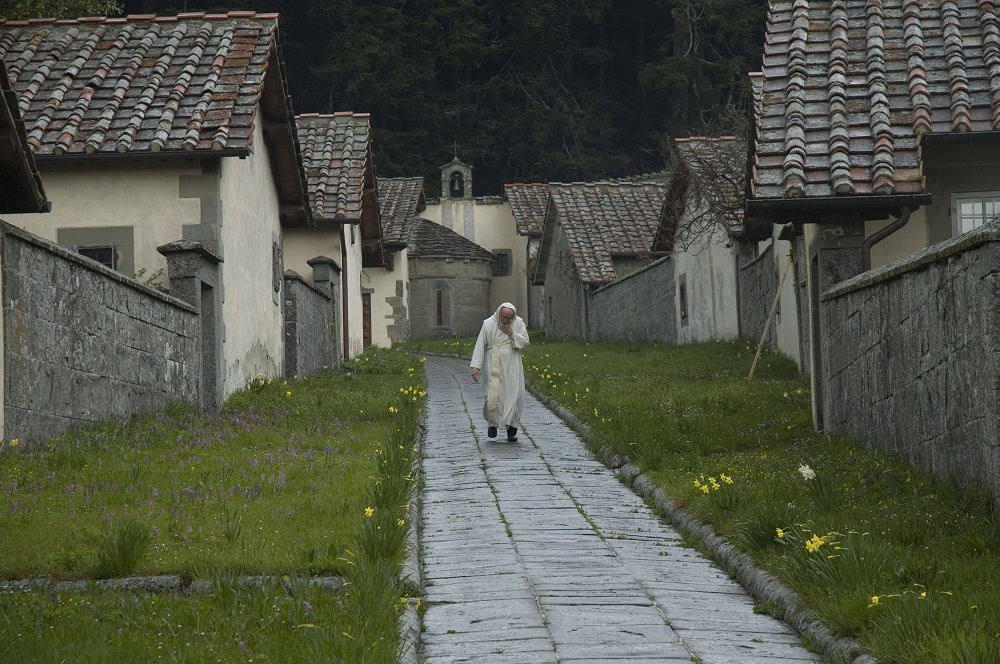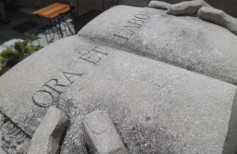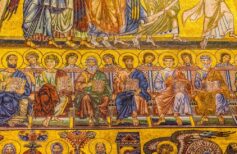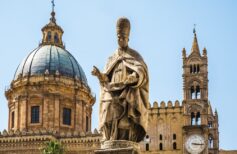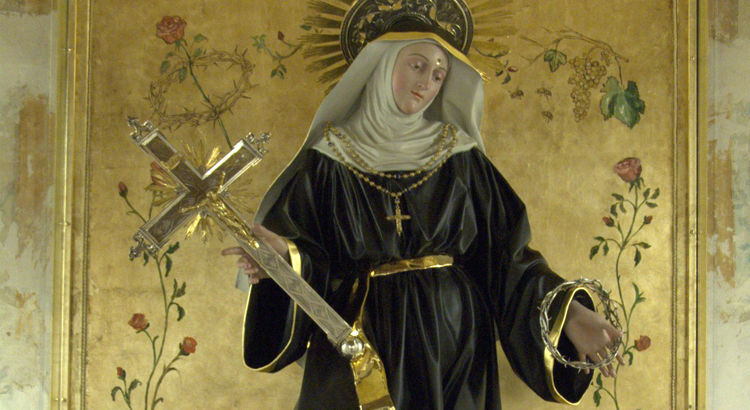Saint Benedict of Norcia is celebrated on July 11th.
This is actually just one of the dates dedicated to the saint from Umbria, founder of the Benedictine order and creator of the so called Rule, which will strongly affect lives and spiritual experiences of all monastic communities after him.
On July 11th the catholic Church celebrates Saint Benedict as Patron of Europe. Another day dedicated to him and particularly celebrated by the religious congregations connected to him is March 21st, anniversary of his death.
Saint Benedict lived in the second half of the fifth century. He approached a religious life very early. At only 12, he was sent to Rome from Norcia were he was born, so that he could study there; he was so disgusted with the decadence of the habits and the lascivious life animating the city, that he dropped out of school and gave up his father heritage in order to live with his wet nurse in the Aniene Valley. And right in her home, still a young boy, he performed his first miracle, putting together a tray that was accidentally crushed by the woman. He later went to Subiaco (a small town not too far from Rome) and met Romano, a monk living in solitude, who initiated him to the hermit life. But Saint Benedict, even though he appreciated isolation and contemplation, felt that that was not the way he wanted to serve God. In fact, his Rule will be detached from the isolated and ascetic lifestyle that was common to most of the religious people of that time, making it revolutionary.
Saint Benedict wanted to associate alone prayers with community prayers, shared with Brothers in any moment of the day, during meals, celebrations, and expressed through singing (Gregorian songs had a great boost with that). In addition to this group prayers, he added work as another way to worship and honor God. Saint Benedict referred to the amanuensis work in particular, whose job was to copy and transcribe sacred texts, but the Rule included any kind of work that could be useful to the community.
No more mortification of the flesh then, no fasting, no sacrifices, no more years in isolation, but rather, a new way to be at the service of God and of the religious community, made of prayer and work, in a physical and mental balance to bring peace and fulfillment of each one’s interior balance. That is why Saint Benedict compared the monastery to a school that was supposed to teach the path to salvation to those who entered. Living according to the rules of the monastery granted the necessary merit to become part of Christ’s kingdom.
Saint Benedict’s Rule stated the importance of prayers, but also of human value, of individual capabilities and of personality that bring the devotee to serve God in the best way possible, guided by a good discipline and an impeccable moral conduct, by mutual compassion and obedience to the abbot. As he said, he wanted to found a “school of service for the Lord, in which we hope we will not have to order anything hard nor strict.”
It was not easy for Saint Benedict to elaborate his Rule, let alone impose it to the monks. His first duty as abbot in Vicovaro ended with a poisoning attempt by some monks, stubborn towards rules and discipline. Things were better in Subiaco, where he was able to build a first community of young devotees who were also faithful to his commandments, and Saint Benedict’s Rule had its consecration in Montecassino, the monastery he founded and where he lived until his death.
Patron of Europe
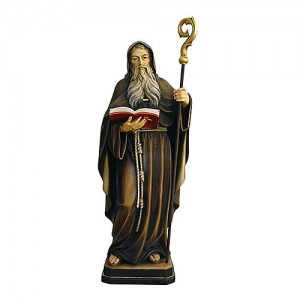
Why was Saint Benedict declared Patron of Europe? Because his model of monastic life, his Rule, offered the Medieval Europe a new example of life and civilization through its models and laws, while it was racked with barbaric invasions and the unstoppable decadence of the Roman Empire. The multiple places of worship and culture born according to his teaching, the monasteries and hospitality centers for poor and sick, the reception structures for pilgrims, all offered men and women of that dark time a silver lining, an oasis of peace and rationality. There people could find protection, safety and that trust in human beings that doesn’t take anything away from faith and devotion towards God. However, it enriches the religious experience investing more on human potential.
A Christian Humanism, if we may call it as such, becomes even stronger and more precious in its recognition of God and man as His instrument. The Word of God, read and understood, solitary or group prayer, the work carried out with brotherly love and with the will to help each other, offer a life model not only for monks, but also for anyone wishing to live their life in the name of God. In the mid-19th century, Europe was in ruins due to the two world wars, devastated by violence and countless deaths, by the fall of the great and delusive political and social ideologies, by the annihilation of values and morals, which lasted for too many years. People felt the need for a new ethical and spiritual model to rely on. A new model, but inspired to traditions, to the origins of Occidental civilization as we know it. Saint Benedict’s Rule appeared as the most advisable solution to most people.
In 1947 Pope Pius XII recognized his role as Father of Europe, and later, on October 24th 1964, during the consecration of the new cathedral in Montecassino which was rebuilt after the ally’s bombings, Pope Paul VI defined Saint Benedict as Patron of Europe. His life and human and spiritual path models can light our paths still today, offering us a direction towards which we can move as humans and Christians, as worthy members of a religious community, but also as citizens of Europe. Those who are responsible and aware that, working together, believing in the same values and putting our efforts in realizing those values every day, can get much farther.
The cult and symbols
Saint Benedict of Norcia’s life and example made him the main character of many popular forms of devotion, begun when he was still alive. Just think of the Medal of Saint Benedict, one of the
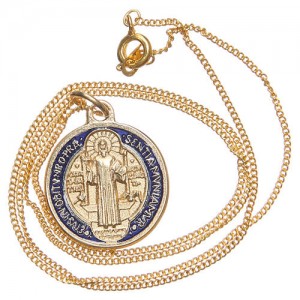
most popular and beloved sacred symbols. Wearing a necklace with the medal of Saint Benedict is not only a way to protect ourselves from evil in its most deceitful and terrible forms, but most of all a way to claim the presence of God next to us in every moment. In fact, Jesus himself operates through the medal, with His immense power, and guarantees his support to those who believe and trust him in every gesture, in every moment.
In 1742 Pope Benedict XIV granted indulgence to anyone wearing the medal with awareness. And not just that, Saint Benedict’s medal is considered one of the most powerful instrument for exorcism ever. On the medal, besides the image of the Saint holding his own Rule in his hands, there are also the embossed initials of a powerful prayer, which has the power to push evil away and keep it far from those who wear the medal and believe in its protection power.
In general, the image of the Saint from Norcia is beloved and present not only in places of worship, but in all places. Statues of Saint Benedict decorate churches and monasteries all over the world, especially since Pope Paul VI declared him as Patron of Europe in 1964. An important recognition for a Saint that was able to teach his Brothers how to serve the Church with their body, mind and with every gift that God allowed them.
The Novena to Saint Benedict
Another way to express devotion to Saint Benedict is to recite his Novena.
The Novena can be recited in every moment we feel the need to receive Saint Benedict’s support and protection, but in general, it is recited between March 12th and 20th to commemorate his death on March 21st; or else, between July 2nd and 10th to celebrate his consecration as Patron of Europe on July 11th. It can be recited alone or with the family, and there are many versions elaborated throughout the centuries by devotees. We just need to find the one closer to our sensitivity and appropriate to the time we can dedicate to it. In any case it will turn out to be an efficient and powerful spiritual exercise.

